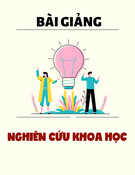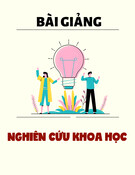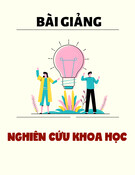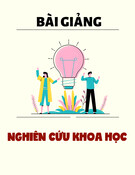
TNU Journal of Science and Technology
229(12): 178 - 186
http://jst.tnu.edu.vn 178 Email: jst@tnu.edu.vn
EFL TEACHERS’ STRATEGIES FOR FOSTERING INCLUSIVITY THROUGH
ALTERNATIVE ASSESSMENT IN HIGHER EDUCATION
Pham Huy Cuong, Ngo Nguyen Thien Duyen*, Nguyen Dinh Tuan
Ho Chi Minh City University of Economics and Finance
ARTICLE INFO
ABSTRACT
Received:
27/5/2024
This qualitative study delves into EFL teachers’ strategies for
promoting inclusivity in language assessment through their utilization
of alternative approaches to accounting for students’ diverse
sociocultural backgrounds, language learning experiences, and levels of
proficiency. Drawing on data from a narrative frame and semi-
structured interviews, the research engaged 10 English teachers from a
private university in Vietnam. These participants have employed
various forms of AA in their teaching. The findings highlight the
transformative potential of AA in catering to individual differences
among students and empowering them with opportunities for
personalized and holistic learning experiences. The teachers’ strategies
for inclusivity were implicated in their design of AA, incorporation of
culturally relevant content, and provision of additional support.
Moreover, the study underscores the importance of creating a
supportive classroom environment that values diversity and
collaboration. The insights gleaned from this research contribute to the
ongoing discourse on enhancing inclusivity in assessment practices
within the context of Vietnamese higher education.
Revised:
08/8/2024
Published:
08/8/2024
KEYWORDS
Inclusivity
Foreign language education
Alternative assessment
Higher education
Teachers’ strategies
CÁC CHIẾN LƯỢC CỦA GIẢNG VIÊN NHẰM NÂNG CAO TÍNH HÒA NHẬP
THÔNG QUA CÁC HÌNH THỨC ĐÁNH GIÁ THAY THẾ Ở BẬC ĐẠI HỌC
Phạm Huy Cường, Ngô Nguyễn Thiên Duyên*, Nguyễn Đình Tuấn
Trường Đại học Kinh tế Tài chính Tp. Hồ Chí Minh
THÔNG TIN BÀI BÁO
TÓM TẮT
Ngày nhận bài:
27/5/2024
Nghiên cứu định tính này tập trung vào các chiến lược của giáo viên
tiếng Anh nhằm thúc đẩy tính hoà nhập trong đánh giá ngôn ngữ thông
qua các phương pháp đánh giá thay thế để xem xét sự đa dạng về văn
hóa xã hội, trải nghiệm và mức độ thành thạo của sinh viên. Dựa trên dữ
liệu từ khung tường thuật và các cuộc phỏng vấn bán cấu trúc, nghiên
cứu có sự tham gia của 10 giáo viên tiếng Anh từ một trường đại học tư
thục ở Việt Nam. Các giáo viên này đã sử dụng nhiều hình thức đánh
giá thay thế khác nhau trong quá trình giảng dạy. Kết quả nghiên cứu
nêu bật tính linh hoạt của các hình thức đánh giá thay thế trong khi xét
về sự khác biệt cá nhân giữa sinh viên và giúp cho họ có cơ hội trải
nghiệm học tập mang tính toàn diện và cá nhân hóa. Các chiến lược
đánh giá nhằm tăng tính hòa nhập mà giáo viên áp dụng được thể hiện
trong việc thiết kế các hình thức đánh giá, tích hợp các nội dung phù
hợp về mặt văn hóa và hỗ trợ thêm từng sinh viên. Nghiên cứu này nhấn
mạnh tầm quan trọng của việc tạo ra một môi trường lớp học mang tính
hỗ trợ, coi trọng sự đa dạng và phối hợp với nhau. Các kết quả nghiên
cứu này góp phần vào việc nâng cao tính hòa nhập trong thực tiễn đánh
giá ngôn ngữ trong bối cảnh giáo dục đại học Việt Nam.
Ngày hoàn thiện:
08/8/2024
Ngày đăng:
08/8/2024
TỪ KHÓA
Tính hoà nhập
Đào tạo ngoại ngữ
Đánh giá thay thế
Giáo dục đại học
Chiến lược của giáo viên
DOI: https://doi.org/10.34238/tnu-jst.10469
* Corresponding author. Email: cuongph@uef.edu.vn

TNU Journal of Science and Technology
229(12): 178 - 186
http://jst.tnu.edu.vn 179 Email: jst@tnu.edu.vn
1. Introduction
Assessment plays a crucial and widely recognized role in English language teaching, serving
various educational purposes [1]. It evaluates students' language proficiency and influences their
learning by guiding their focus, providing motivation, and shaping their actions [2]. In addition to
motivating learners and helping them set learning goals, assessment provides valuable feedback to
teachers for tailored instruction [3], [4]. It also contributes to curriculum development and offers
insights into the effectiveness of language teaching programs. Assessment is usually categorized
into three main types based on their purposes: certifying achievements (Assessment of Learning),
supporting the learning process (Assessment for Learning), and facilitating sustainable practices
(Assessment as Learning) [5]. Recently, McArthur [6] has introduced the concept of assessment
for social justice, which focuses on ensuring fairness in higher education assessment and
recognizes its role in fostering learning that contributes to achieving justice in society.
Although assessment is a universal practice, students’ assessment experiences can vary
significantly, especially for those from nonconventional backgrounds [7]. As higher education has
become more accessible and inclusive, a more diverse student population whose sociocultural
backgrounds and aspirations are different can be anticipated [8]. This diversity brings considerable
issues and challenges to the assessment process, necessitating assessment practices which are
inclusive and responsive to the diverse needs of students. As a result, the concept of inclusivity in
assessment has gained considerable attention from researchers and teachers [6], [9]. Inclusive
assessment refers to the deliberate design and implementation of fair and effective assessment
methods as well as practices which enable all students, regardless of their backgrounds or
circumstances, to demonstrate their knowledge, understanding, and abilities to their fullest potential
[10]. Inclusive assessment goes beyond providing equal opportunities for all students; it recognizes
and values the diverse ways in which students may approach and demonstrate their learning [9].
In recent years, assessment practices within the field of English language teaching and learning
have undergone notable transformations. Alternative assessment (AA), defined as a diverse range
of methods designed to monitor and evaluate the learning process in authentic and meaningful
ways, has gained significant prominence in EFL/ESL contexts due to its distinctive characteristics
[11]. AA can be seen as a departure from conventional testing, emphasizing authentic tasks and
real-world performance [1] - [3]. It can also be understood as a process of ongoing, formative
feedback that supports learning and development, rather than a one-off summative evaluation [4],
[5], [9]. Unlike the traditionally dominant paradigm of summative assessment, alternative
approaches aim to monitor and evaluate student learning through a diverse array of means. This
shift can be attributed to several factors, including the growing influence of constructivist
perspectives on language learning, the widespread dissatisfaction with conventional assessment
methodologies, and the emergence of more holistic conceptualizations of linguistic competence
[11]. Proponents of AA argue that these approaches offer tangible benefits for both teachers and
learners [11], [12]. From an instructional standpoint, AA practices enable teachers to more
effectively monitor and analyze their students' academic progress while promoting greater learner
autonomy and self-reflection. For students, engagement with AA can foster a deeper
understanding of their strengths, weaknesses, and areas needing improvement, thereby facilitating
continuous development. In EFL/ESL classrooms, AA can manifest in various forms, including
portfolios, reflective journals, performance-based tasks, observational notes, conferences, and
diverse modes of self- and peer-assessment [4], [11]. Such diversity contrasts with the limited
scope of traditional summative evaluations, providing a more comprehensive and dynamic means
of gauging student learning and progress in language acquisition.
To foster a more inclusive approach to assessment, various studies have provided valuable
insights. Researchers have suggested that cultivating a sense of belonging and value for all
students is important [7]. Additionally, the need for a positive and supportive learning

TNU Journal of Science and Technology
229(12): 178 - 186
http://jst.tnu.edu.vn 180 Email: jst@tnu.edu.vn
environment has been emphasized [13], [14]. Notably, AA approaches have been found to
facilitate more inclusive learning environments that respect and appreciate the diverse
perspectives and contributions of students [15] - [17]. By offering multiple avenues for students
to demonstrate their knowledge and skills, AA can accommodate varied learning styles and
abilities, thereby promoting greater equity and cultural responsiveness in educational settings [7].
Bourke [15, p. 197] comments that AA practices in higher education “allow for a greater choice
over what inclusive assessment practices to employ”. In the same vein, Gravestock [18] notes
that the utilization of AA methods not only enhances inclusivity in assessment but also mitigates
the negative impacts of sociocultural factors on assessment validity and fairness. However, the
author [15, p. 195] warns that offering students alternative assessment options does not
automatically make assessment more inclusive, as students may feel anxious about unfamiliar
assessment methods until they realize there is no single "right way" to demonstrate their learning.
In their seminal work that highlights the principles of Universal Design for Learning, Meyer
et al. [19] depict specific actions to ensure the development of more effective and inclusive
assessment practices within EFL contexts. They emphasize the critical importance of aligning
course assessments with stated learning objectives systematically and rigorously. Also, teachers
are encouraged to incorporate a variety of evaluation methods, ranging from traditional
examinations to written assignments, quizzes, and project-based assessments. Building on this
notion, Quansah et al. [20] suggest that teachers adopt flexible assessment options for learners
with special educational needs through the judicious modification and incorporation of AA
strategies, such as authentic assessment, performance-based assessment, and portfolio
assessment. McConlogue's [17] shares a similar viewpoint, asserting that AA designs are crucial
for catering to students' individual strengths and preferences. Additionally, Meyer et al. [19]
suggest that when feasible, students should be given the opportunity to customize or choose the
assessments they will complete. In this regard, Meyer et al. [19], Tomlinson [21], and
Tosuncuoglu [4] stress the importance of providing students with abundant chances for formative
assessment and skill development through low-stakes, scaffolded activities. These alternative
practices allow students to practice and sharpen their skills while enabling teachers to identify
areas that need additional instructional support. It is also essential that assessment expectations
and criteria be communicated clearly and with ample advance notice to students, since this
empowers them to focus their efforts on achieving the intended learning objectives [14], [15], [19].
In the Vietnamese context, quite a few studies have explored the applications and feasibility
of AA practices [22]-[24]. However, there is still a noticeable gap in the research regarding the
association between AA and inclusivity in English language teaching. Although the broad
benefits and employment of AA in EFL contexts are well documented, little has been undertaken
to explore the issue of inclusivity in assessment and how EFL Vietnamese teachers can achieve
this through AA practices. This study aims to fill this gap by investigating how EFL teachers in
Vietnam employ AA strategies to foster inclusivity in language assessment. It is guided by the
following research question:
How do EFL teachers in Vietnam utilize AA strategies to promote inclusivity in language
assessment?
2. Methodology
2.1. Settings and Participants
The research was carried out at a private institution in Vietnam with the mission of offering
students an education that meets international standards. In pursuit of this objective, the
university provides an English intensive curriculum and a variety of out-of-class learning
activities to enhance students' opportunities for language practice within and beyond the
classroom. Additionally, it enforces a somewhat rigorous language competency requirement for
graduation, with a minimum overall band score of 5.5 on the IELTS (International English

TNU Journal of Science and Technology
229(12): 178 - 186
http://jst.tnu.edu.vn 181 Email: jst@tnu.edu.vn
Language Testing System) or a comparable score on other standardized language proficiency
tests. This language benchmarking surpasses the B1 level required by the Vietnam's Ministry of
Education and Training as this level is equivalent to an overall IELTS band score ranging from 4
to 5 [25]. Each English course includes both formative and summative assessment. Teachers have
the autonomy to use their own forms of formative assessment to measure their students' ongoing
language performance (30% of the course score) and administer a speaking test (20% of the
course score). The summative component, which accounts for the remaining 50%, entails an end-
of-term achievement exam in the form of multiple-choice questions that focus on vocabulary,
grammar, listening, and reading skills.
The participants in this study were 10 teachers of Vietnamese nationality employed full-time at
the university. This group included nine females and one male whose teaching experience varied
from 10 to 20 years. Nine out of ten participants had Master’s Degrees in TESOL or Applied
Linguistics and one participant held a doctoral degree in TESOL. They took part in this investigation
voluntarily, with the researchers' commitment to guaranteeing their confidentiality and anonymity.
The participants also had the right to withdraw from this project at any given moment or refuse to
respond to any inquiries they considered to be personal or unrelated. From a preliminary informal
survey, all the participants acknowledged having prior experience in applying AA.
2.2. Procedures and data analysis
This study draws on a qualitative approach, using a narrative frame and semi-structured
interviews to gather data on AA methods. A narrative frame is a written story template that allows
participants to share their experiences and perspectives on the association between AA practices
and inclusivity in language teaching [26]. The input for devising the narrative frame and interview
guide drew on the existing literature on inclusivity in education and the ways in which inclusivity
elements can be integrated into AA in language classrooms [5], [8], [9], [12], 16]. All participants
completed the frame in English. Semi-structured interviews were conducted after the narrative
frame was completed, providing further insights into teachers’ strategies and adoption AA to
promote inclusivity. The interviews were conducted in-person or via video conferencing, allowing
for open-ended discussions. The interviews were recorded and transcribed verbatim for analysis.
The study used an inductive approach to analyzing narrative and interview data, focusing on
emerging themes and findings [27]. The analysis followed three phases proposed by [28]
including preparation, organization, and reporting of results. The preparation phase allowed
researchers to develop initial insights by scrutinizing and organizing data. The organization phase
involved carefully examining data and labeling codes, which were then grouped into themes and
corroborated with excerpts. Narrative and interview excerpts were abbreviated as "nar" and "int".
The final stage involved reporting on the findings based on the researchers' interpretation of
identified themes and supporting excerpts.
3. Findings & Discussion
3.1. Recognizing and Valuing Student Diversity
The teachers in the present study utilized AA strategies based on their perceived value of AA
contributions to accounting for student diversity. They highlighted the influences of AA on
students from diverse cultural backgrounds. For example, Participant 1 stated that “AA can have
a profound impact on students from diverse cultural backgrounds... empower learners and
validate their unique experiences” (int). Similarly, Participant 7 noted that “AA can have a
positive impact on students from diverse cultural backgrounds by providing opportunities for
them to demonstrate their knowledge and skills in ways that resonate with their cultural
experiences” (int). These sentiments were echoed by Participant 8, who emphasized that “I
believe AA have a positive impact on students from diverse cultural backgrounds by providing
opportunities for personalized and holistic learning experiences” (int). These teachers

TNU Journal of Science and Technology
229(12): 178 - 186
http://jst.tnu.edu.vn 182 Email: jst@tnu.edu.vn
emphasized the importance of recognizing and valuing student diversity through AA. Such
findings support previous research on the role of AA strategies in promoting inclusivity in
language education [15], [17].
Participants' accounts also underscored how AA, such as presentations, portfolios, and
discussions, empower students from diverse cultural backgrounds by allowing them to
demonstrate their knowledge and skills in ways that resonate with their experiences. This is
consistent with McConlogue's [17] assertion that flexible and adaptable assessment designs are
crucial for catering to students' individual strengths and preferences. The use of diverse assessment
methods, as described by Participant 2, provided multiple means of action and expression, further
promoting student agency and confidence “I use diverse methods like presentations, portfolios,
discussions, and storytelling to assess student learning. Such practices promote student agency
and confidence while allowing me to align assessment methods with course objectives” (nar).
Similarly, Participant 9 utilized reflective journals and performance tasks as tools for promoting
deeper understanding and student autonomy “The AA that I choose to use are reflective journals
and performance tasks. I prioritize these methods because they enhance deeper understanding,
allow students to apply their skills, and promote student autonomy in self-assessment” (nar).
In summary, this section highlights the crucial role of AA in acknowledging and valuing the
diverse backgrounds of students in EFL classrooms. The teachers emphasized the positive impact
of AA in empowering students and validating their unique experiences. These elements create a
more inclusive learning environment that caters to individual strengths and preferences,
ultimately fostering a deeper understanding of students and their language studies.
3.2. Creating Inclusive Learning Environments
The participants emphasized the role of AA in creating inclusive learning environments.
These forms offer opportunities for students to demonstrate their knowledge and skills in varied
and culturally relevant ways. In this way, students have opportunities to demonstrate their
knowledge and skills in diverse and culturally relevant ways. Participant 1 noted that these
assessments empower learners and validate their unique experiences, while Participant 7
highlighted the use of culturally relevant assessment tasks in “providing opportunities for
personalized and holistic learning experiences” (int).
The utilization of culturally relevant assessment tasks, as mentioned by Participant 7, reflects
a recognition of the importance of validating students' diverse cultural backgrounds and
experiences. This approach resonates with McConlogue's [17] emphasis on adaptive assessment
design, which aims to cater to learners’ individual needs and preferences. Furthermore,
Participant 1's recognition of AA's ability to empower learners and validate their unique
experiences aligns with the broader aim of inclusive assessment to create a sense of belonging
and value for all students [7].
The acknowledgement of sociocultural challenges in implementing AA and the strategies
employed by the participants to address them further highlight the importance of contextualizing
assessment practices. Participant 9's focus on fostering a supportive classroom environment in
which students feel valued and respected is crucial for creating a safe space for all learners to
express themselves and engage in activities “I try to foster a supportive classroom environment
where students feel valued and respected and they can express themselves better as well as
engage more in the activities” (int). This approach aligns with the broader literature on inclusive
assessment, which emphasizes the need for a positive and supportive learning environment [14].
In short, this section highlights the value of AA in fostering an inclusive learning
environment. The teachers in the current study highlighted the importance of utilizing diverse and
culturally relevant assessment tasks to create a supportive classroom atmosphere where all
students feel valued and respected, ultimately promoting active participation and meaningful
engagement in learning activities.

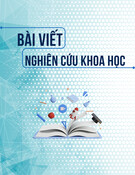
![Tài liệu kiểm tra đánh giá trong giáo dục [chuẩn nhất]](https://cdn.tailieu.vn/images/document/thumbnail/2025/20250715/kimphuong1001/135x160/11601752564027.jpg)
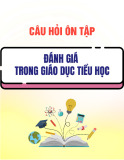



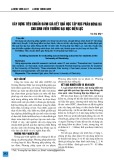

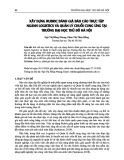


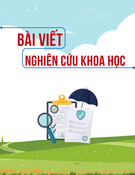
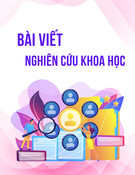
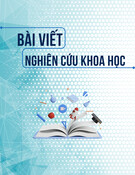
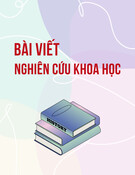
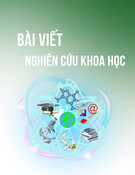
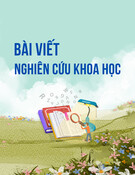
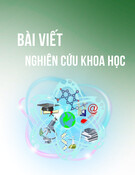
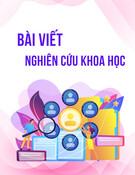
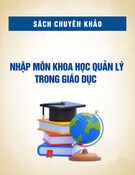
![Định hướng giáo dục STEM trong trường trung học: Tài liệu [chuẩn/mới nhất]](https://cdn.tailieu.vn/images/document/thumbnail/2025/20251124/dbui65015@gmail.com/135x160/25561764038505.jpg)
